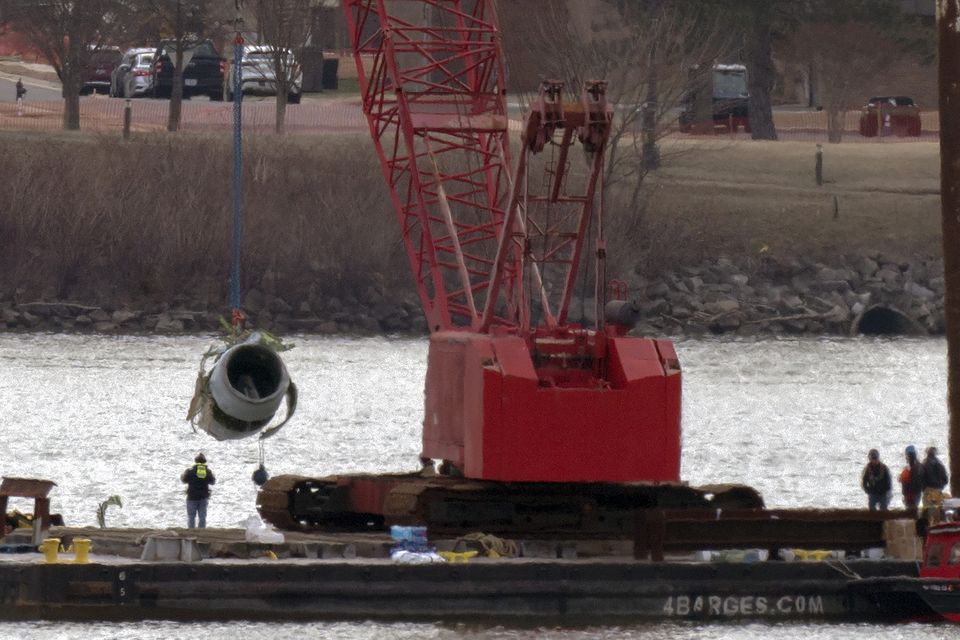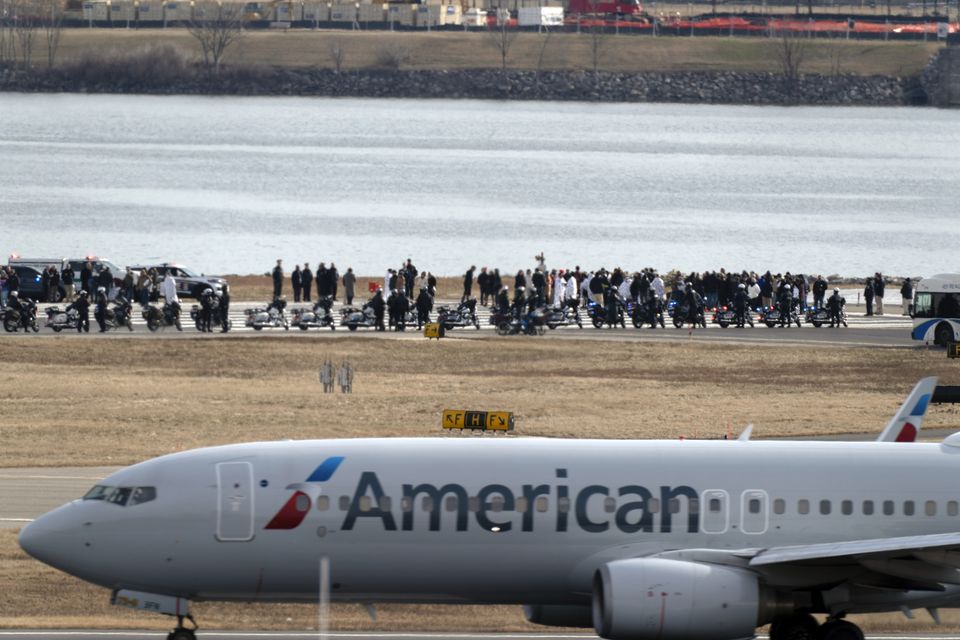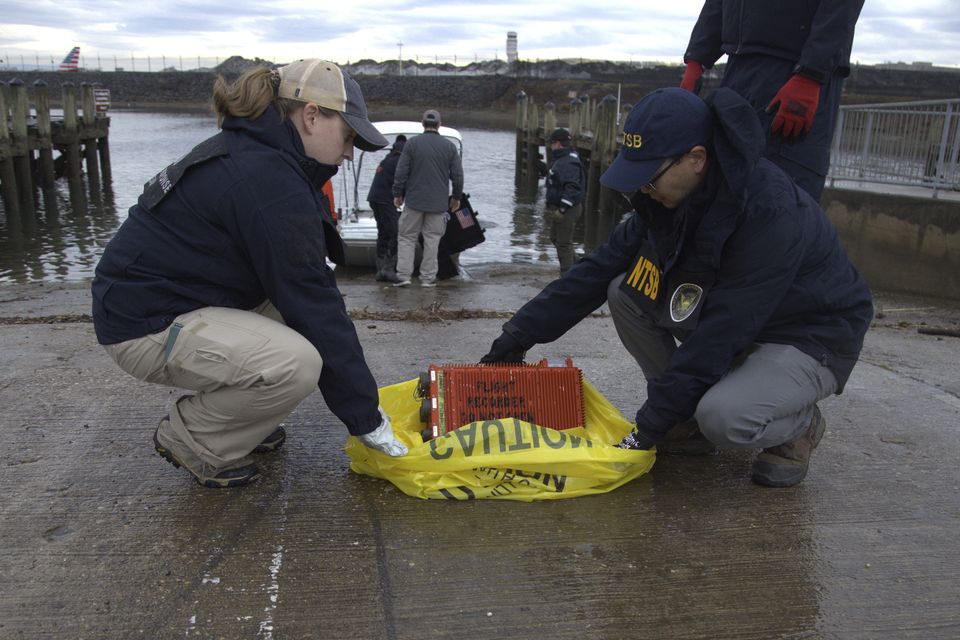Salvage crews have recovered an engine and large pieces of fuselage and are working to retrieve a wing from the wreckage of the airliner involved in last week’s mid-air collision over Washington DC, officials said.
They also recovered more human remains from the Potomac River, although they declined to offer specifics, reiterating only that 55 of the 67 victims have been found and identified since the crash on Wednesday.
Authorities have said the operation to remove the plane will take several days and they will then work to remove the military helicopter involved.
The crash between the American Airlines jet and an army helicopter over Washington DC was the deadliest US air disaster since 2001.
Salvage crews pull up a plane engine (Jose Luis Magana/AP)
More than 300 people are taking part in the recovery effort at any given time, officials said. Two navy barges were also deployed to lift heavy wreckage.
Washington DC Fire Department Assistant Chief Gary Steen told a news briefing that officials are confident all the victims will be found.
Divers and salvage workers are adhering to strict protocols and stopped moving debris at times when human remains were being recovered, said US Army Corps of Engineers Colonel Francis Pera. The “dignified recovery” of remains takes precedence over everything else, he added.
Portions of the two aircraft that collided over the river on Wednesday night near Ronald Reagan Washington National Airport — an American Airlines jet with 64 people aboard and a US Army Black Hawk helicopter with three aboard — are being loaded on to flatbed trucks and will be taken to a hangar for investigation.
Crews hope to recover the jet’s cockpit on Tuesday, Mr Pera said.
The crash occurred when the jet, en route from Wichita, Kansas, was about to land. The Black Hawk was on a training mission. There were no survivors.
On Sunday, family members were taken in buses with a police escort to the Potomac River bank near where the two aircraft came to rest after colliding.
Families of the victims stand near the wreckage site in the Potomac River (Jose Luis Magana/AP)
The plane’s passengers included figure skaters returning from the US Figure Skating Championships in Wichita and a group of hunters returning from a guided trip.
The three in the helicopter were Army Staff Sergeant Ryan Austin O’Hara, 28, of Georgia; Chief Warrant Officer 2 Andrew Loyd Eaves, 39, of Maryland, and Captain Rebecca M Lobach, of North Carolina.
Federal investigators are working to piece together the events that led to the collision. Full investigations typically take a year or more, but investigators hope to have a preliminary report within 30 days.
Wednesday’s crash was the deadliest in the US since November 12 2001 when a jet slammed into a New York City neighbourhood just after take-off, killing all 260 people on board and five on the ground.
Experts stress that plane travel is overwhelmingly safe, but the crowded air space around Reagan Airport can challenge even experienced pilots.
The National Transportation Safety Board said on Saturday that preliminary data showed conflicting readings for the altitudes of the airliner and the helicopter.
Investigators also said that about a second before impact, the jet’s flight recorder showed a change in its pitch, but they did not say whether that change meant that pilots were trying to perform an evasive manoeuvre to avoid the crash.
Investigators examine a flight data recorder recovered from the Potomac (NTSB/AP)
Data from the jet’s flight recorder showed its altitude as 325ft, plus or minus 25ft, when the crash happened, NTSB officials told reporters.
Data in the control tower showed the Black Hawk at 200ft, the maximum allowed altitude for helicopters in the area.
The discrepancy has yet to be explained.
On Monday, officials cautioned against premature speculation about the cause of the crash or the helicopter’s altitude, or whether or why it may have been travelling above 200ft.
“There are all kinds of reasons that you could deviate from an altitude, you know, something as simple as a flock of birds is in front of you or you may deviate if you see something that’s an obstacle or other threat,” US Army deputy director Mark Ott said at the news briefing.
Investigators said they hoped to reconcile the difference with data from the helicopter’s black box and planned to refine the tower data, which can be less reliable.


